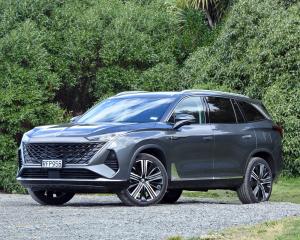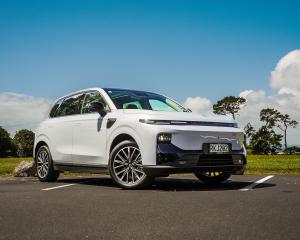
What is new?
Subaru’s most adventure-capable vehicle, the Forester, has entered its sixth generation this year with both pure petrol and hybrid options on offer.
A hybrid choice within the Forester range is nothing new, but the previous system — developed in-house by Subaru and deployed on the fifth generation Forester — was underwhelming: performance was muted, economy gains in real-world motoring were limited, there was no pure EV mode, and the space taken up by the vehicle’s battery reduced boot space and left no room for a spare wheel. Unsurprisingly, then, it found limited favour on the sales charts compared with its pure-petrol sibling.
To make its fresh hybrid start, Subaru has turned to Toyota, which has both a minority ownership stake in Subaru, and a treasure-trove of experience in hybrid powertrains.
Whereas the previous Forester hybrid combined a 110kW/196Nm 2-litre petrol engine with a small 13kW/66Nm electric motor, the new system allies a larger and stronger 121kW/212Nm 2.5-litre engine with a much more potent 90kW/276Nm electric motor.
Combined peak outputs of 145kW and 276Nm are not only vastly superior to what the previous hybrid could muster, but decisively better than the 136kW and 247Nm delivered by the pure petrol version of the latest Forester.
As was the case with the previous generation, this new Forester is built around the current Subaru Global Platform, albeit with that platform strengthened for improved rigidity and ride comfort.
The CVT transmission has also been refined to better mimic a conventional eight-speed automatic.
Although furnished, or at least largely designed, by Toyota, the hybrid system also remains true to Subaru heritage in that power delivery is still via Subaru’s signature symmetrical all-wheel-drive system.

Although Subaru has every reason to expect its latest hybrid Forester to be the sales success its predecessor surely wasn’t, the Kiwi model range still splits 50:50 between pure petrol and battery-assisted variants.
Stick with the traditional powertrain, and pricing opens at $49,990 for the base-model petrol AWD. The petrol Sport is tagged at $54,990 and the petrol Touring is $56,990. The entry-level Hybrid AWD — as tested here — is stickered at $52,990; the Hybrid Sport is $59,990 and the Hybrid Touring is $60,990.
What does it look like?
The sixth-generation Forester retains the familiar boxy silhouette that has defined the model for years. However, in keeping with current design trends, key elements are more aggressively rendered.
At the front, the nose is notably bluffer, with the large grille flanked by slim LED headlights and daytime running lights. The wheel arches are more squared off than before and these and the body cladding provide an adventurous visual persona. The rear features redesigned taillights and a revised window line that contributes to a sleeker profile.
The overall effect is a vehicle that looks more rugged and upscale, although if you care to get out a measuring tape, you’ll find not much has changed dimensionally. This new model is just 15mm longer and wider than its predecessor and both height and wheelbase are unchanged.
Exterior trimmings are fanciest on the Sport and Touring, with their 19-inch alloys, slim-line roof rails and body-coloured garnishing. Still, the standard AWD Hybrid looked fine on its 235/55-shod 18-inch alloys and the black-coloured cladding gave a rugged feel.
What is it like inside?
Get inside the Forester and there is much that is familiar in a cabin that prioritises comfort, practicality and user-friendly design. While the interior layout has few surprises, various updates enhance both the ambience and usability.

Stepping up to the Sport and Touring will bring superior trim and upholstery, but the test car’s seats were pleasant enough with their mixed texture cloth and subtle blue contrast stitching. Similarly, while the dash featured a hard-surface finish across the top, there was an interesting textured finish to some of the inserts, while the doors had both soft-touch uppers and woven fabric inserts.
Storage solutions are plentiful: large door bins, cupholders, a deep central bin and a decent glovebox ensure everyday usability. USB-A and USB-C plug points are provided at the base of the centre console, while a rear USB-C port is also fitted.
The front seats are firm and supportive and the fundamentals of the driving position are sound. That said, while the front of the cabin is functional and well-equipped overall, some controls — like the EV mode button, low down to the right of the steering wheel — are oddly placed.
A cabin that is light, airy and spacious in the back as well as the front has been a Forester staple for years and the new model continues in this vein. Ideal for two, and adequate for three, the second-row seats are set quite high and so boast good visibility. There is still ample headroom and even better rear legroom. Rear passengers also enjoy adjustable air vents, map pockets and a fold-down armrest with cupholders.
The inevitable loss of boot space that an electric motor and battery system entails has been minimised by ditching the full-sized spare wheel of the petrol Forester; in fact, on the hybrid there’s no spare under the boot floor of any kind.
The good news is that with this compromise, boot space is 484 litres (expanding to 1655 litres with the rear seats folded down). That’s not far shy of the petrol version’s 496 litres/1667 litres and, as well as being usefully large, the boot area is practical in shape and provisions with bag hooks and tie-down points.
If you are still fretting about the implication of a flat tyre some way from help, rest assured it’s been an even bigger concern in Australia; there, a spare wheel carrier that mounts on the towbar has been developed as an extra-cost accessory.
What comes as standard?
All sixth-generation Foresters feature an upgraded EyeSight driver assistance system that now includes an emergency stop function as part of the attention alert system that triggers if the driver becomes unresponsive. Autonomous emergency braking, lane departure warning and assist, adaptive cruise control and blind-spot monitoring are also provisioned across the range, along with adaptive headlights and a 360-degree camera system.

A wireless charging pad is provided from entry-level, along with LED exterior and interior lights, rear privacy glass, keyless entry, dual-zone climate control, heated front seats and a leather-rimmed steering wheel. There’s also wireless Apple CarPlay and Android Auto connectivity; that said, I experienced drop-out gremlins connecting my Android device wirelessly and so resorted to an old-school cabled connection.
Sport and Touring get 19-inch wheels, extra body garnish, premium interior trims, a sunroof, premium sound system, power-operated memory seats, a power operated tailgate, satellite navigation and an upgraded terrain management system.
What is it like to drive?
With Subaru’s claimed 0kmh-100kmh sprint time of 9.7 seconds seeming about right, this latest Forester hybrid is no sports car. However, the new hybrid set-up provides a useful dollop of mechanical vim that is most evident when gathering pace from slow to medium speeds, where decisive gains in both acceleration and aural refinement accrue.
Based on Drivesouth’s test, the claimed economy figure of 6.9-litres/100km is almost certainly achievable during everyday highway driving; the test car was tracking just shy of that at 7.0-litres/100km on test before some modest off-roading took its toll, to end things with a 7.7-litres/100km return.
As an aside, the standard cycle fuel consumption figure seems to indicate a roughly 20% fuel efficiency edge over the pure-petrol and very similar performance. The latter variants do hold an edge for towing, mind, being rated to haul up to 1800kg braked, compared with the hybrid’s 1200kg limit.
Driving on-road, this latest Forester hybrid has matured significantly in refinement, capability and comfort.
At low speeds in urban settings, it glides silently in EV mode, with the petrol engine engaging seamlessly when needed. Away from city limits, incisive open-road corner-carving is not something the vehicle is designed for, but with a more rigid chassis, new steering rack and revised suspension there’s sharper turn-in, reduced body roll, and better handling balance. As noted earlier, the hybrid’s electric assist adds a welcome boost during acceleration and the well-sorted CVT transmission delivers power and torque smoothly.
Off-road, the Forester continues to impress, with abilities that are an obvious point-of-difference in its class. Supported by 220mm of ground clearance and the advanced X-Mode terrain management system, the mechanical all-wheel-drive system excelled on test when traversing gravel, mud, sand and a couple of small water crossings. Ride quality is also excellent, both on rutted gravel and rough off-road surfaces.
The ability to operate in EV mode off-road is a neat trick, enabling quiet and controlled navigation over challenging terrain, although with the small battery and regenerative braking only activated in normal drive mode, it is for short-stint use only.

Verdict
As it had to be, the new Forester hybrid is a vast improvement on its lacklustre predecessor. It delivers comfort, capability, and practicality.
All that’s really missing is that spare wheel.
AT A GLANCE
SUBARU FORESTER HYBRID AWD
Overall rating: ★★★★
Design and styling: ★★★★
Interior: ★★★★
Performance: ★★★
Ride and handling: ★★★★
Safety: ★★★★★

SPECIFICATIONS
Price: $52,990.
Powertrain: 2498cc boxer-four petrol engine with supplementary electric motor. Maximum combined power 145kW, maximum combined torque 276Nm.
Transmission: Eight step continuously variable transmission, all-wheel-drive.
Safety rating: Five-star ANCAP.
Wheels and tyres: alloy wheels 235/55 R18 tyres.
Fuel and economy (all WLTP-3): 91 octane petrol, 6.9 litres/100km, tank capacity 63 litres.
Emissions: 140g per km (WLTP-3).
Dimensions: Length, 4655mm; width, 1830mm; height, 1730mm.
Kerb weight: 1717kg











